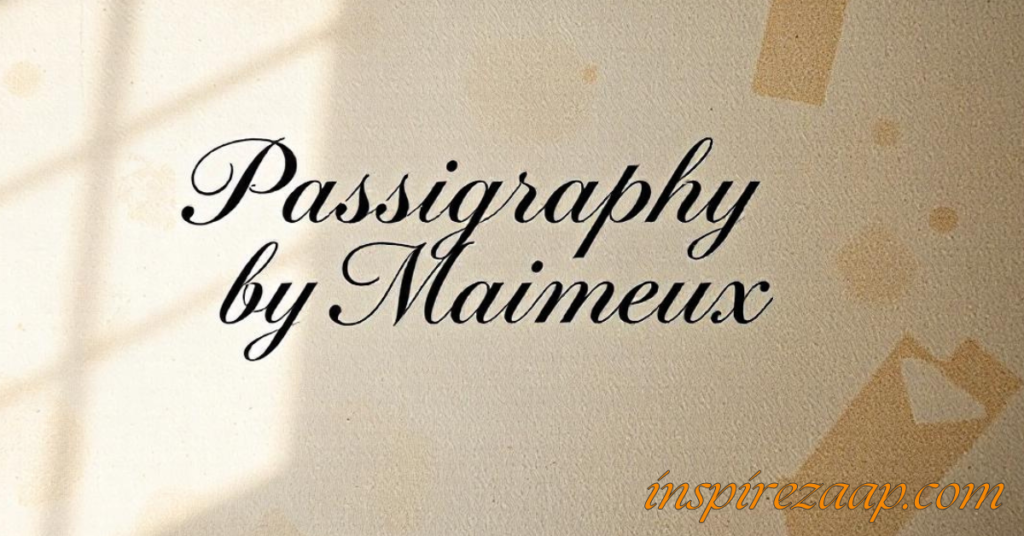In a world that has long been divided by language barriers, the idea of a universal language has fascinated scholars and visionaries for centuries. One such visionary was Joseph de Maimieux, a French linguist and inventor, who developed “Passigraphy” in the early 19th century. Passigraphy was conceived as a way to facilitate communication among people who spoke different languages.
Maimieux believed that by creating a universal written language, people from various linguistic backgrounds could communicate effortlessly, bypassing the need to learn multiple languages. While the idea of passigraphy never became mainstream, it is a fascinating concept that laid the groundwork for future discussions on universal languages.
The Concept of Passigraphy
Passigraphy, in essence, is a system of symbols designed to represent concepts and ideas, rather than the sounds of spoken words. This system of writing would allow individuals from different linguistic backgrounds to understand each other by reading the same set of symbols. Unlike phonetic languages, where the symbols correspond to specific sounds or letters, passigraphy relies on ideograms, where each symbol represents a specific idea or object.
For example, in traditional languages like English or French, the word “tree” or “arbre” represents the concept of a tree. In passigraphy, however, the symbol for a tree would be universal, understood by anyone regardless of their spoken language.
Maimieux’s Vision for Passigraphy
Joseph de Maimieux envisioned passigraphy as a tool to unite people across cultural and linguistic divides. He saw it as a means of fostering international communication, diplomacy, and understanding. In Maimieux’s time, Europe was composed of numerous nations with distinct languages, and this created barriers to trade, diplomacy, and even scientific advancement.
Maimieux believed that language should not be a limiting factor in human progress. He proposed that if everyone could communicate through a universal written system, it would pave the way for more efficient collaboration, trade, and even the prevention of conflicts. To Maimieux, language was a bridge that should connect people, not separate them.
How Passigraphy Works
Passigraphy works by using symbols to represent common ideas, objects, or actions. These symbols would be universally recognized, meaning that a person from China, France, or Brazil would all understand the same written symbol for an idea like “water” or “sun.” This makes passigraphy different from traditional written languages, which require understanding the specific grammar, syntax, and vocabulary of the language.
Maimieux’s system was built on the idea that human experiences and concepts are often universal, regardless of language. For example, everyone understands the concept of food, shelter, water, and family. By creating symbols for these universally recognized ideas, Maimieux hoped to eliminate the language barrier.
One of the major benefits of passigraphy is that it simplifies communication between people who speak different languages. Instead of spending years learning another language, one could simply learn the passigraphy symbols and immediately begin communicating with others. This was particularly useful for international trade, scientific exchange, and diplomatic correspondence.
The Challenges of Passigraphy
Despite its potential, passigraphy faced several challenges that prevented it from becoming a widely adopted system. One of the biggest hurdles was its reliance on written symbols. While Maimieux’s system allowed for written communication, it did not account for spoken language, which is a key component of everyday human interaction. A written universal language could only go so far in enabling real-time conversations or debates.
Another challenge was the complexity involved in creating a truly comprehensive set of symbols. While many basic concepts can be easily represented through ideograms (e.g., sun, water, tree), abstract ideas such as “freedom,” “justice,” or “love” are harder to depict. This made passigraphy difficult to scale up for more nuanced or philosophical conversations.
Additionally, Maimieux’s system came at a time when national languages were deeply intertwined with national identity. People were often reluctant to adopt a new system of writing that seemed to threaten their linguistic and cultural heritage.
Passigraphy’s Influence on Modern Linguistic Theories
While passigraphy did not become the global standard that Maimieux had hoped for, it had a lasting influence on the study of language and communication. The idea of a universal written system laid the groundwork for later efforts to create auxiliary languages, such as Esperanto, which also aimed to simplify communication between people of different linguistic backgrounds.
Moreover, passigraphy’s focus on ideograms and symbols has similarities to modern-day technologies. For instance, emojis and pictograms used in digital communication today share a similar concept—they are small symbols that convey universal ideas, understood by people across different languages and cultures.
Conclusion
Passigraphy by Maimieux was an ambitious attempt to bridge the linguistic divide between people of different nations. Though it did not achieve widespread adoption, it remains an important concept in the history of linguistics and communication. Maimieux’s vision of a world united by a universal written language underscores the enduring human desire for connection and understanding. While the complexity of creating a truly comprehensive set of symbols proved difficult, the idea of simplifying communication remains relevant today, as we continue to seek ways to break down language barriers and foster global cooperation.


